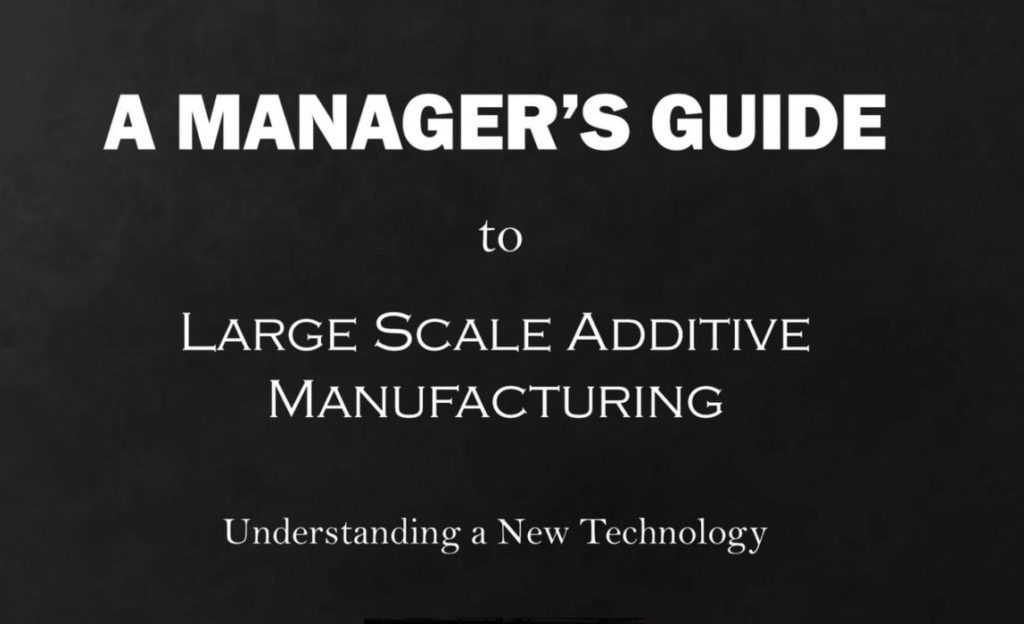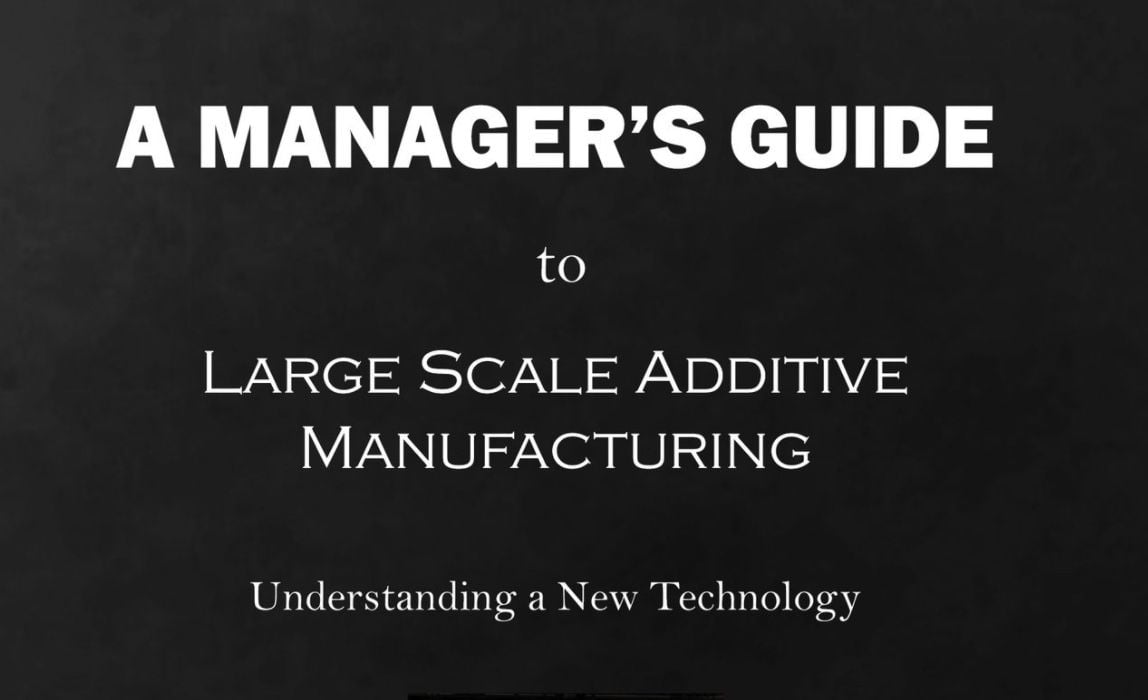
This week’s selection is “A Manager’s Guide to Large Scale Additive Manufacturing” by Ken Susnjara.
Additive manufacturing is slowly becoming more popular among manufacturers, but it still has a very long way to go to saturate the market. At this time by far the large majority of parts are produced using conventional making processes such as injection molding, milling or casting, and only a relatively few parts are made using additive processes.
That said, there is considerable interest in additive approaches by many manufacturers. While most of the activity is in the aerospace, automotive and healthcare sectors due to the already relatively high cost of parts, those in other sectors are beginning to explore the world of additive manufacturing.
The problem is that many manufacturing operations are considerably smaller than your typical automotive or aerospace company, and have less ability to perform detailed investigations of the technology.
For that reason many smaller manufacturers have not proceeded into additive operations. They may feel that the costs are too high, or they may not truly understand what it is about and what it could do.
The latter point might seem strange given that technicians and technologists are likely to know about the technology. The issue is that the managers of the manufacturing organization may not “get it”.
That’s where this book comes in. It provides a very easy-to-read tale of the tech from an author that has spent many years in the business producing parts using additive manufacturing.
The book begins with a layman’s explanation of additive processes, with the FFF process at the forefront. Susnjara also explains the nature of the polymers involved, and the software and hardware workflows required to operate the machines.
Susnjara spends an entire chapter discussing “What Can I Make?” This is a critical aspect of additive manufacturing, as that technology is definitely not appropriate for many parts. But it is appropriate and even desirable for some other parts.
There are multiple chapters discussing the operational aspects of manufacturing parts at large scale using additive technology, including ways to simulate operations as well as maintaining the technology and materials to current state-of-the-art, which is important in the rapidly-moving world of 3D printing.
Finally, after explaining how additive works in manufacturing, Susnjara spends a chapter on how to get started with the technology. This is perhaps the most important chapter for managers reading the book, as it provides a step-by-step approach for initiating additive within a business.
The book is not for techs, but is definitely for managers. I hope this book can help turn on additive within even more manufacturing businesses.
We’re an Amazon Associate and earn a small fee from qualifying purchases. Help support our 3D print news service by checking out this book!
Via Amazon

